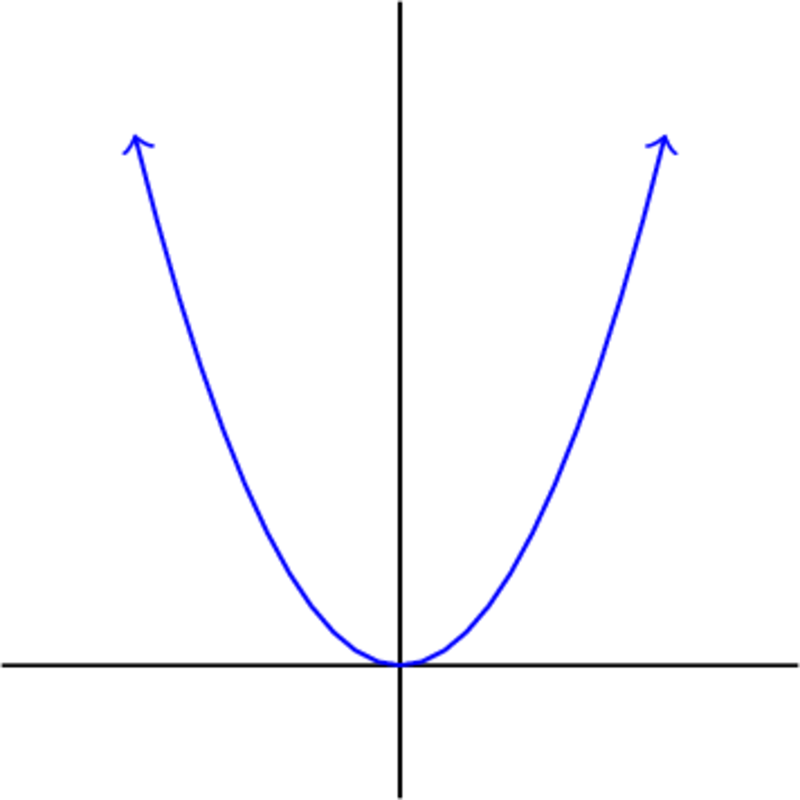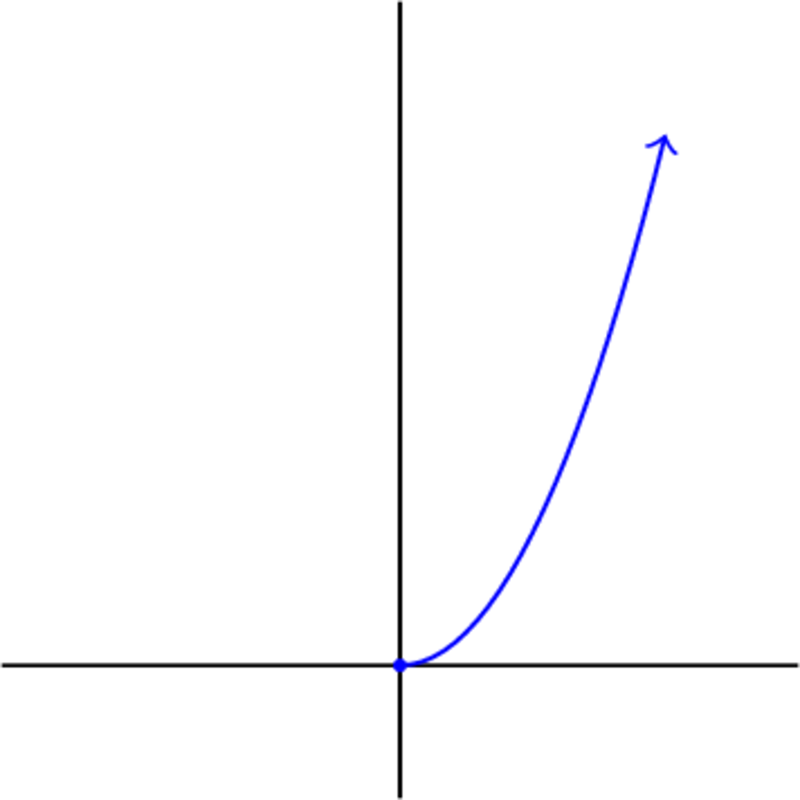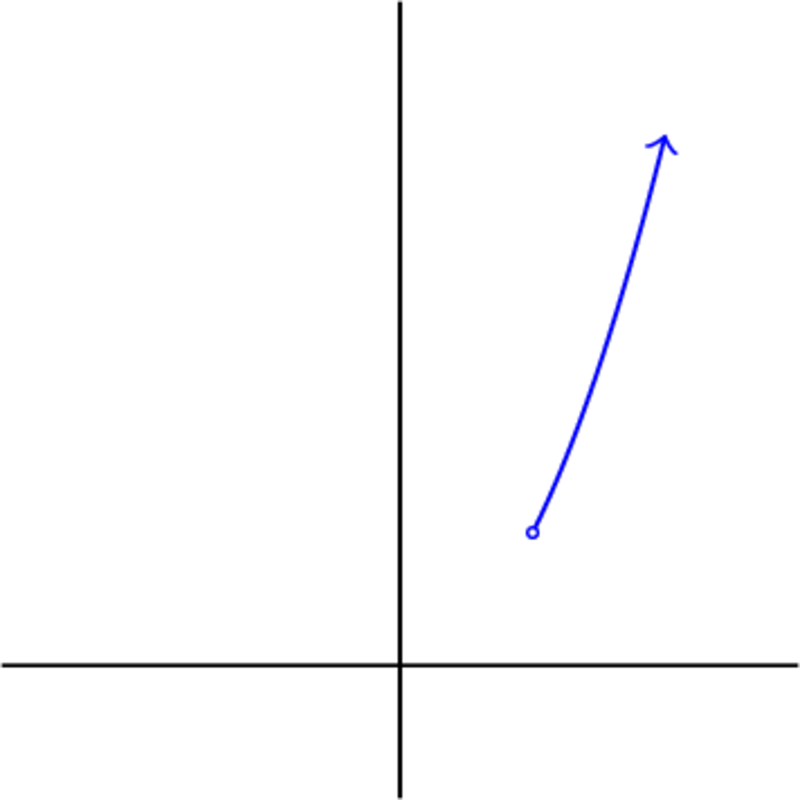Week 1 Discussion Notes
Table of Contents
Symbols
Here are a bunch of symbols that you'll probably see during lecture (and if you're a math major, for the rest of your life).
Definition
- "is in" or "is an element of"
- "there exists"
- "for all" or "for any" or "for every"
- "implies"
Example 1.
water my fridge
student MATH 31B, the student is an undergraduate
you are here you MATH 31B
you are here you are awake
Set Notation
You're probably familiar with intervals to specify sets (e.g., , , etc.). While these are useful, some sets may be hard or tedious to write as intervals, so we're going to introduce a new, more general way to specify sets.
Example 2.
Example 3.
The domain of is .
Exercise 1.
Write as an interval.
Exercise 2.
Write the domain of using this notation.
Functions
A function always comains with a domain , and the range of is determined by . If the domain isn't specified, then it's usually taken to be the largest set where is defined.
Example 4.
If and is not specified, then we assume .
Example 5.
Let .
Inverses
What is an Inverse?
Given a function , we'd like to know if we can go "backwards" from . This is useful if you need to solve something like ; if we can "undo" , then we automatically have the solution to the equation. This can be done if is invertible:
Definition
Let have domain and range . If with domain and range such that
- and
- ,
then we say is invertible and we call the inverse of .
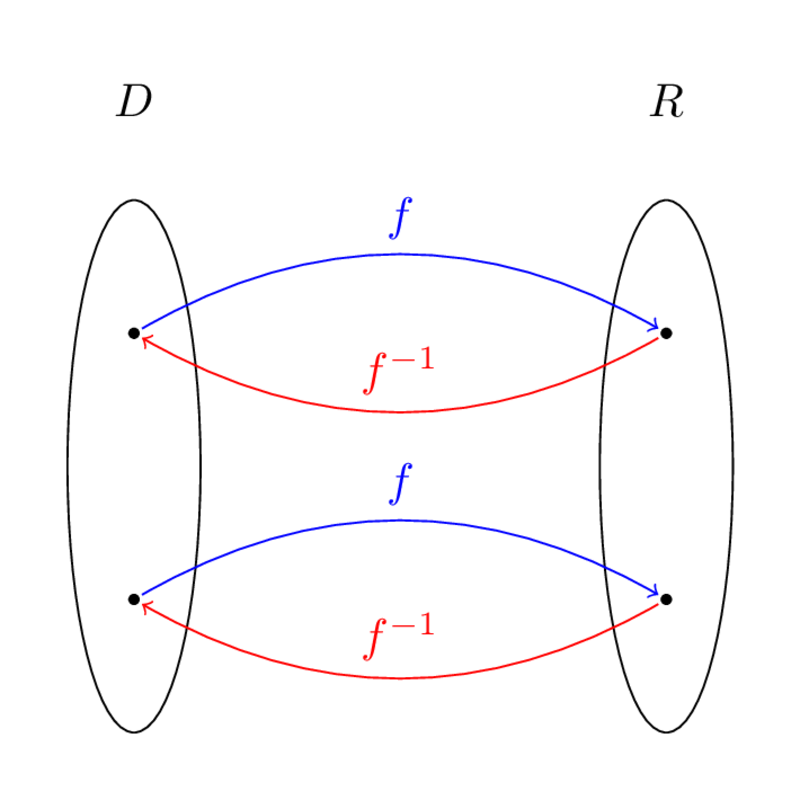
When is there an Inverse?
So when does have an inverse? Let's look at a situation where does not have one.
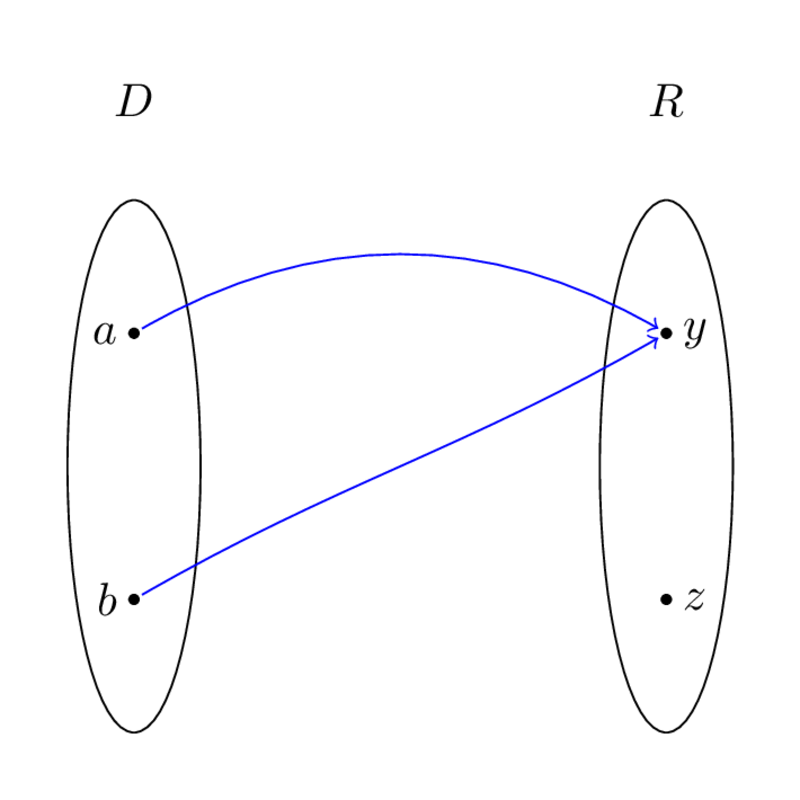
doesn't have an inverse here because we can't go backwards from to get both and . Indeed, any function with domain will map to either or , but not both. The problem is that maps two different elements to the same thing, so if we prevent this, will have an inverse.
To prevent this, we need to map two different elements to two different things. More succinctly, . If satisfies this, then we call one-to-one, but this isn't the only way to tell if is one-to-one:
Definition (one-to-one)
Let have domain , and suppose one of the following is true about :
- or
- has exactly one solution or
- or
- passes the horizontal line test.
Then we say is one-to-one or injective.
Notice that the domain is very important when determining whether is one-to-one or not.
Example 6.
Let .
-
If , then is not one-to-one.
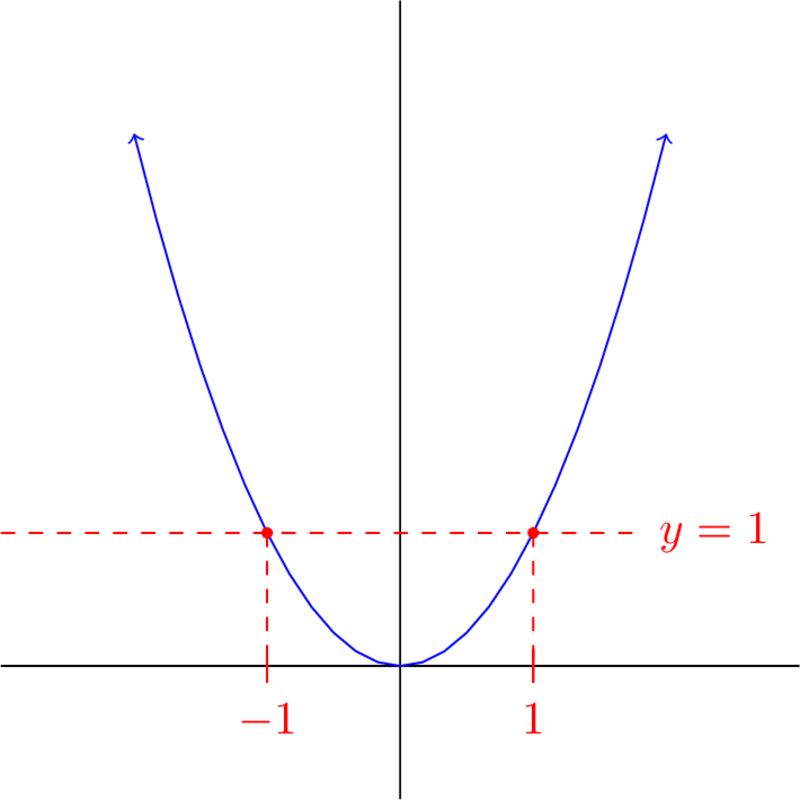
has two solutions: and .
-
If , then is one-to-one.
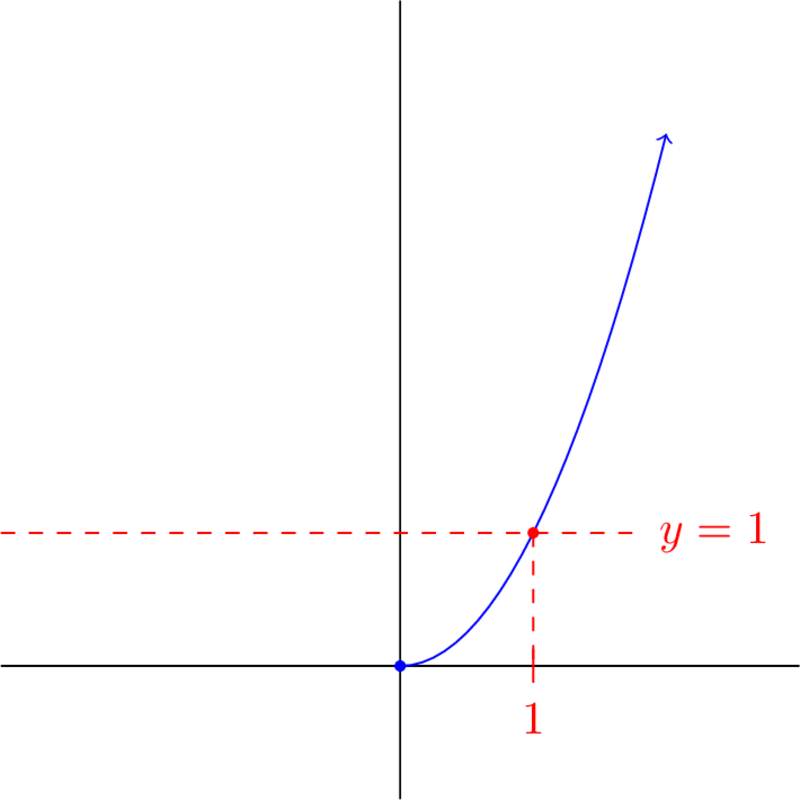
Since is one-to-one, it has an inverse, which is .
